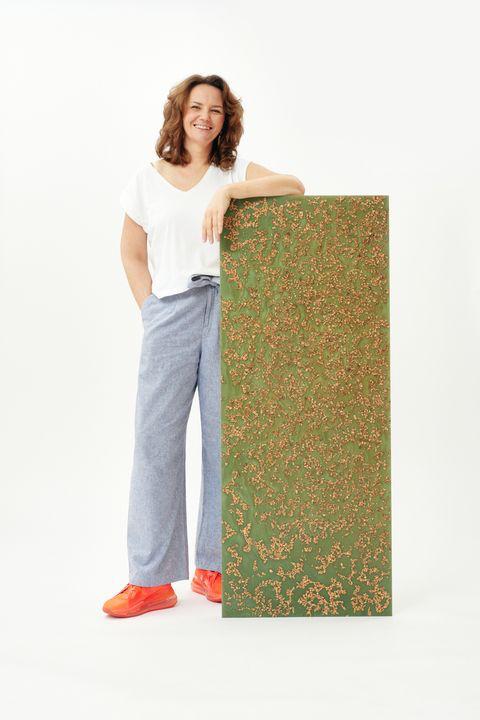CIRCURAL DESIGN
What is it?
Circular design is an approach to designing products, systems and processes that aims to minimize waste and the use of natural resources by maximizing reuse, recovery and recycling. The goal is to create more sustainable, efficient and eco-friendly solutions that have less impact on the environment.
How does this work in practice?
In practice, it means designing products so that they are easy to repair, recover the materials they are made from and reuse in the future. This is accomplished through several key steps:
Why Migaloo?
Migaloo furniture boards are made from a selection of waste materials that are often no longer recyclable to return to their original form. Sometimes this is dictated by a complicated process that is difficult to separate components (like the mixed fibers in the materials we process) sometimes reprocessing is very uneconomical. Our method is to use a stream of unprocessed trash, cleaned only of dirt. It is also a method that does not release volatile compounds, as no high temperature is generated for the process. In our Plastryko, the plastic from the ground nuts is not dissolved to a liquid form and then thermosofed, but only poured into a matrix of green resin. Our binder is a resin that contains as much as 40% biocarbon extracted as waste from the production of biofuel – that is, from rapeseed, an annual crop. We also strive to manage responsibly not only our own waste, but also that of our customers. We sell the formers needed for production with only a 2% stock, in this way we also take care of the environment. The product is protected only with a layer of natural oil for wood, it has no varnished layers. This makes it very easy to renew it with sandpaper – this can be done manually, or mechanically with an oscillating grinder
Raw material
The most interesting part of the process of customized tabletop service is the analysis of our customers’ trash – it is from this trash that Migaloo home’s organic laboratory creates first samples and then entire realizations.The client also gains image-wise, being able to seat his employees or guests at a table made from his own trash, which looks like an artistic installation.Using this process for various marketing campaigns has a high social media following.
Protected technology

Monika Blaszkowska holds 4 patents related to plates made from trash, having invented and developed the entire production process herself based on her years of experience.Monika is an architect by training, whose passion is design.Watching furniture deteriorate after 10-15 years of use in homes or offices, having to deal with throwing away unfashionable damaged tables, desks, countertops on a daily basis, she decided to help customers and the environment deal with this short-term consumption.Her invention proved to be extremely effective and resistant to discoloration, water and scratches.To this day, products evolve into different design families, but there is one common denominator of concern for sustainability and… using as much trash as possible, every crumb matters.







